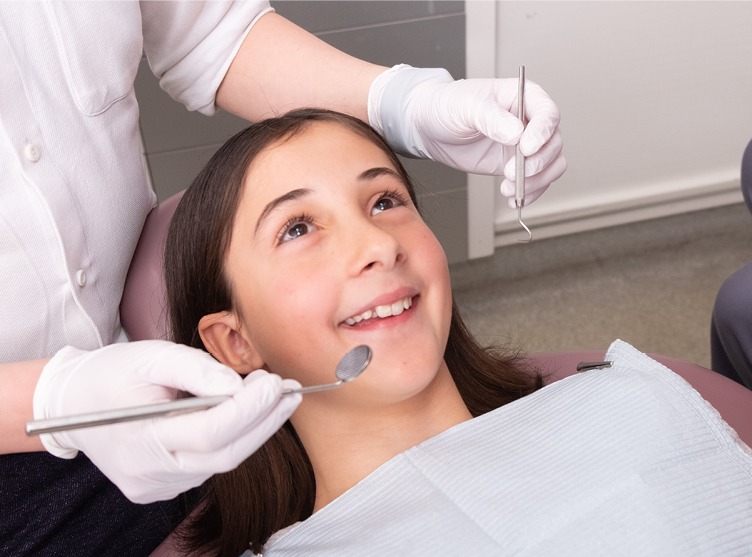About Legacy Orthodontics
About Legacy Orthodontics
Blog Article
Unknown Facts About Legacy Orthodontics
Table of ContentsThe Facts About Legacy Orthodontics RevealedLegacy Orthodontics - QuestionsThe Legacy Orthodontics PDFsLegacy Orthodontics Fundamentals ExplainedWhat Does Legacy Orthodontics Mean?
At Advanced Orthodontics, we provide clients with a holistic therapy experience. Furthermore, we provide adjustable treatment routines, adaptable payment choices and an enjoyable, pleasurable experience. invisalign. Phone call ( 480) 357-4900 today for more details and routine a consultation.An orthodontist is a dental professional trained to identify, prevent, and treat teeth and jaw abnormalities. Orthodontists function with individuals of all ages, from kids to grownups.
Malocclusion, or misaligned teeth, can result in dental concerns, consisting of dental cavity, gum tissue illness, and challenging or uncomfortable eating. Yet not every person is birthed with straight teeth. If you have a bad bite or huge spaces between your teeth, you might wish to speak with a dental professional specializing in orthodontic treatment.
Legacy Orthodontics Things To Know Before You Buy
( Image Credit Score: DigitalVision/Getty Images) Orthodontists use taken care of and removable dental tools, like dental braces, retainers, and bands, to alter the setting of teeth in your mouth. Orthodontic therapy is for oral abnormalities, consisting of: Crooked teethBite issues, like an overbite or an underbiteCrowded teeth or teeth that are also far apartJaw misalignmentThe objective of orthodontic treatment is to improve your bite.
A healthy bite ensures you can consume, chew, and speak effectively. While you might consider orthodontists as generally for youngsters or young adults that require braces, they can correct oral troubles at any kind of age. Orthodontists participate in university, dental institution, and orthodontic institution. After graduation, they invest 2 or 3 years in an orthodontic residency program.
, but not all dentists are orthodontists. They concentrate on 2 locations: How to effectively and safely relocate teeth Exactly how to properly direct growth in the teeth, jaw, and faceOnce an orthodontist has completed training, they have the choice to come to be board accredited.
The 6-Second Trick For Legacy Orthodontics
Misalignment, or malocclusion, is the most typical reason people see an orthodontist. It is hereditary and is the result of dimension distinctions in between the upper and lower jaw or between the jaw and teeth. Malocclusion brings about tooth congestion, an askew jaw, or irregular bite patterns. Malocclusion is normally treated with: Your orthodontist connects steel, ceramic, or plastic square bonds to your teeth.
Some individuals need a headgear to help move teeth into line with stress from outside the mouth. A retainer is a custom gadget that maintains your teeth in location.
They're frequently used on youngsters. They can produce extra area in the mouth without having to draw teeth. If you have a major underbite or overbite, you could require orthognathic surgery (also called orthodontic surgical treatment) to lengthen or shorten your jaw. Orthodontists use wires, medical screws, or plates to support your jaw bone.
You might need to see an orthodontist if you have: Crowding or not enough space for all of your teethOverbite, when your top teeth come over your bottom teethUnderbite, when your bottom teeth are also much forwardSpacing or problems with gapsCrossbite, which is when your upper teeth fit behind your base teeth when your mouth is closedOpen bite or a vertical void between your front bottom and top teethMisplaced midline, when the center of your base and upper teeth do not align Correcting an oral malocclusion can: Make biting, chewing, and speaking easierImprove the symmetry of our face and your total appearanceEase pain from temporomandibular joint conditionsSeparate your teeth and make them much easier to clean, assisting stop dental cavity or dental caries It's often a dental expert that initially notifications misaligned teeth throughout a regular examination.
The Legacy Orthodontics Diaries

During your very first orthodontic assessment, you'll likely have: A dental examPhotos taken of your face and smileDental X-raysPanoramic (360 level) X-rays of your face and headImpressions to produce molds of your teethThese examinations will aid your orthodontist recognize just how to continue Find Out More with your therapy. braces. An orthodontist is a dental practitioner who's had training to treat your teeth and jaw
Orthodontists might do surgery, exams,X-rays,and more to help you attain an extra comfy, healthier smile. An orthodontist is concentrated on your bite, so something like a chipped tooth would certainly be managed by a dental professional. Orthodontists are dental experts yet not all dentists are orthodontists. Orthodontists are concentrated on your bite, or the means your teeth fit together, and the straightness of your teeth.
Ever wondered how celebs always seem to have flawlessly aligned teeth? The response often depends on the experienced hands of an orthodontist. But what precisely does an orthodontist do? Orthodontists are dental experts who focus on dealing with abnormalities in the teeth and jaws. Their competence exceeds simply producing an attractive smile; it includes enhancing your general dental wellness and function.
See This Report about Legacy Orthodontics

, orthodontists have a varied toolkit at their disposal. These reliable braces use a system of braces bound to the teeth and attached by cords.
These detachable trays are tailor-made to gradually move the teeth's setting. In situations of slim jaws, palatal expanders can be used to create space for correct tooth positioning.
Report this page